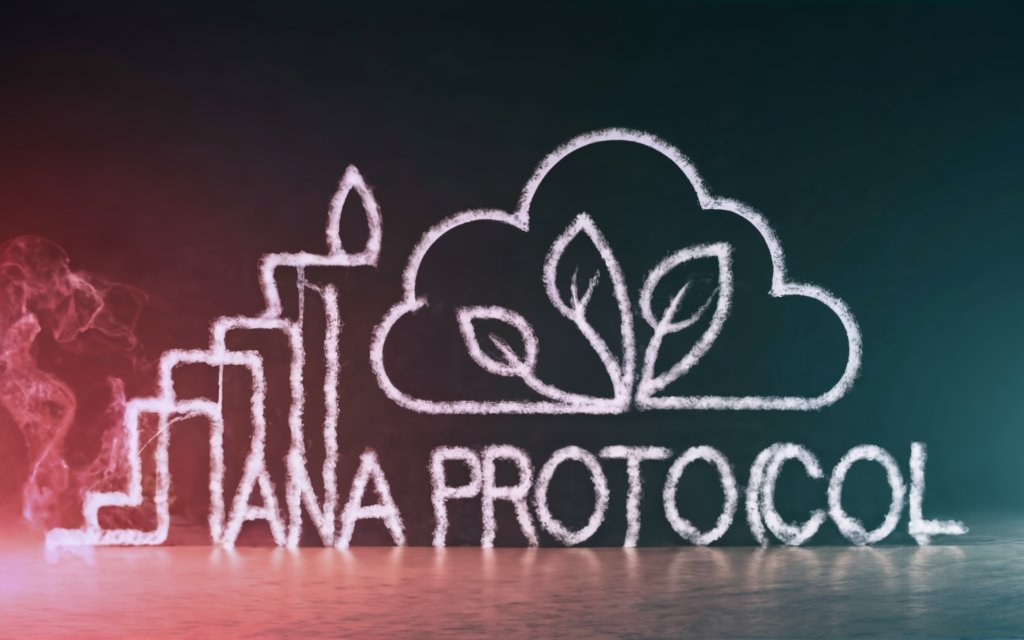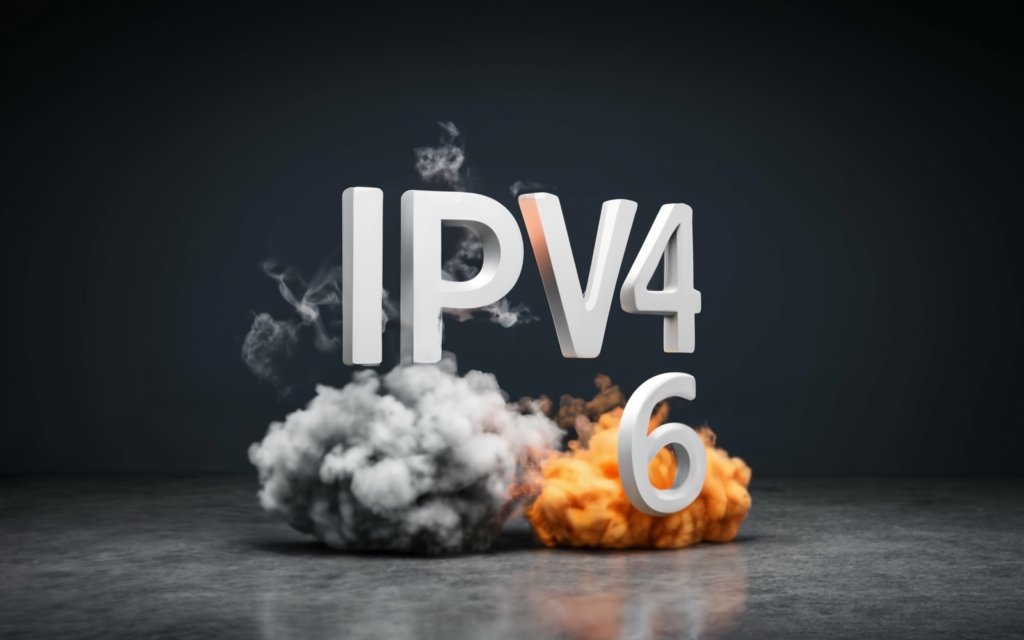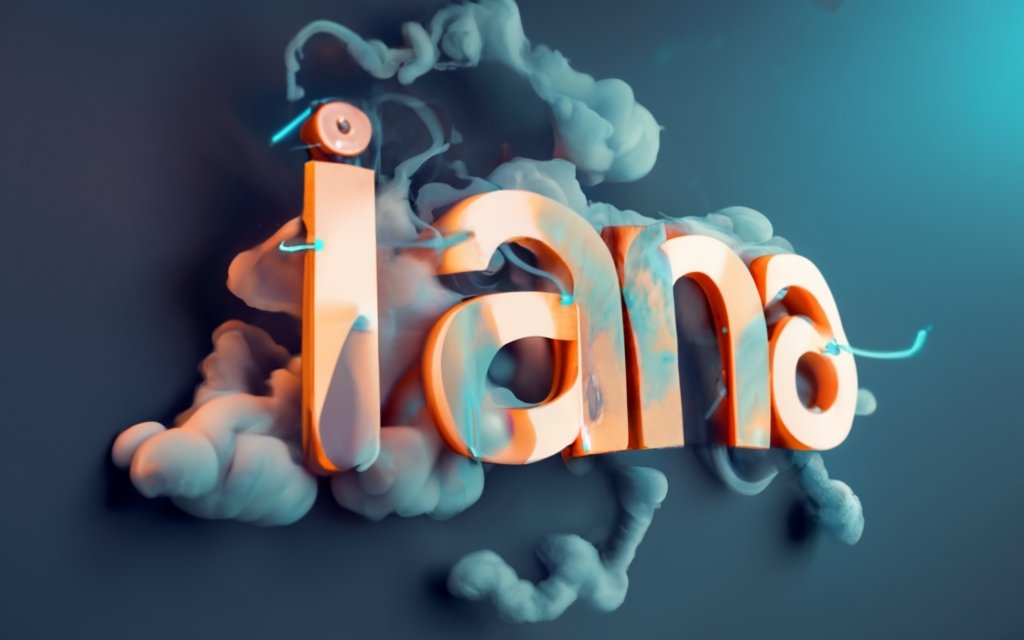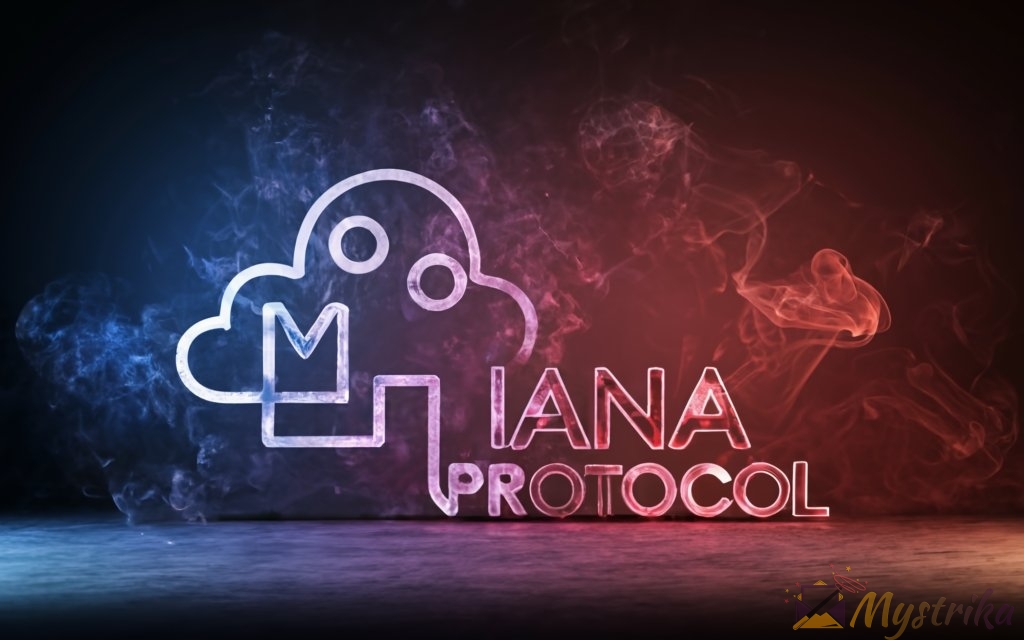Packets traversing the Internet encode hidden details that control their journey. Like passports at border crossings, they carry cryptic identifiers that determine how they will be handled. Peering inside reveals numeric protocol tags that unlock the secrets of Internet communications.
This intriguing system of codes enables the Internet’s workings, yet remains opaque to most users. Let’s demystify IANA protocol numbers and explore what these identifiers mean for the networking pros who rely on them.
Surfing the web, sending emails, streaming movies – most of our daily online activities rely on protocols, the technical languages that allow computers to communicate. Ever peeked under the hood and wondered how these protocols are standardized globally? That’s where the Internet Assigned Numbers Authority (IANA) steps in.
IANA coordinates some of the key technical operations that keep the Internet running smoothly. One of their responsibilities is maintaining the official registry of protocol numbers used in the Internet Protocol (IP).
Defining IANA Protocol Numbers
When data gets sent across the Internet, it is broken up into packets, like parcels delivered by an international courier. Each packet has an IP header that includes a protocol number – an identifier for the specific protocol encapsulated within.
For example, TCP packets contain protocol number 6, while UDP packets are marked with 17. This allows the receiving system to know how to handle the data inside once reassembled.
IANA manages the protocol number namespace, assigning unique values to protocols from proposed standards (like TCP and UDP) to experimental protocols still in development.

Purpose Behind IANA Protocol Numbers
IANA protocol numbers serve a few key purposes:
- Uniquely identifying protocols embedded in IP packets for proper routing and processing
- Avoiding conflicts between protocols using the same number
- Providing a reference for protocol-related operations like network configuration and troubleshooting
For instance, firewall rules often filter traffic based on protocol numbers. IANA provides that universal numbering system so vendors can implement it consistently.
How New Protocol Numbers Are Assigned
Adding a protocol to the official IANA registry involves a formal process. Typically, the Internet Engineering Task Force (IETF) submits proposed protocols for review by IANA as part of ongoing standards development.
Once a protocol specification meets certain maturity criteria, IANA assigns an unused protocol number, adds it to the registry, and marks any competing drafts as deprecated.
There are also experimental ranges available, so protocols can be tested with temporary codes before getting an official assignment down the road.
Reserved vs. Unassigned Protocol Numbers
The IANA registry designates each protocol number as either reserved or unassigned:
- Reserved numbers are assigned to established standards like TCP and UDP as well as protocols used internally by operating systems.
- Unassigned numbers have not yet been allocated and remain available for future protocols.
There are also ranges set aside for private or local use, where organizations can apply their own experimental protocols during development and testing without needing IANA approval.
So in summary, IANA protocol numbers enable the standardized identification of protocols used for Internet data transmission. From reserving codes for common protocols like TCP to maintaining unassigned numbers for future needs, IANA plays a central role in coordinating this critical aspect of Internet infrastructure.
Of the hundreds of protocols recognized by IANA, a handful make up the backbone of Internet communication and are encountered frequently when working with networks. These protocols have reserved protocol numbers that rarely change. Let’s look at five of the most prevalent IANA protocol numbers you’ll come across.
Protocol Numbers for TCP and UDP
The Transmission Control Protocol (TCP) and User Datagram Protocol (UDP) handle most of the heavy lifting when transporting data over IP networks. They provide services like flow control, reliability, and connection management that IP itself does not offer.
TCP is central to communication and has the protocol number 6. Nearly all web, email, remote access, and file transfer traffic relies on TCP under the hood. Its key features include:
- Traffic is delivered reliably and in-order through sequence numbers and acknowledgments.
- Congestion and flow control prevents senders from overwhelming receivers.
- Bidirectional connections are established before data transmission.
In contrast, UDP with protocol number 17 offers simpler unordered, unreliable transport. There is no connection setup – data is just fired off. UDP is commonly used for:
- DNS queries and responses
- Streaming audio and video
- Online games and voice chat
UDP has lower overhead than TCP, but data can be lost or arrive out-of-order. Applications must implement additional logic as needed to use UDP reliably.

Protocol Number for ICMP
The Internet Control Message Protocol (ICMP) is integral to network operations and troubleshooting. It has the protocol number 1.
ICMP enables hosts and routers to communicate issues and diagnostics data. Key message types include:
- Echo request/reply – Used by ping to verify reachability
- Destination unreachable – Indicates packet can’t be delivered
- Redirect – Informs sender of better route
- Time exceeded – Detects routing loops
By inspecting ICMP traffic, network engineers can analyze performance problems and detect outages. Many monitoring systems and command-line utilities depend on ICMP under the hood.
Protocol Number for IGMP
The Internet Group Management Protocol (IGMP) handles multicasting on IP networks. Its protocol number is 2.
Multicasting allows sources to efficiently send data to multiple receivers simultaneously. IGMP enables hosts to notify routers that they want to join or leave multicast groups. Routers use this to manage multicast forwarding tables.
Common examples of multicasting traffic include:
- Streaming video services
- Push updates from cloud services
- Cluster replication
Protocol Numbers for IPv4 and IPv6
IP itself has a protocol number! This allows tunnels and encapsulations to be stacked.
The protocol number 4 identifies an IPv4 packet. For example, layers of IPsec encryption often embed an inner IPv4 packet with payload marked as protocol 4.
Similarly, 41 indicates IPv6 payload encapsulated within IPv4 or IPv6. There are also protocol numbers defined for fundamental IPv6 extension headers like routing, fragmentation, and hop-by-hop options.
So in summary, these five everyday protocols have reserved IANA numbers that provide standardized identification as data traverses the Internet. Whether it’s web traffic over TCP, traceroutes using ICMP, or encapsulated tunnels carrying IPv6 within IPv4 – the protocol number tells systems how to handle the data inside.
IANA maintains a registry of all recognized protocol numbers – it’s the authoritative reference for protocols used on the Internet. Let’s walk through the key details of the complete list.
IPv4 and IPv6 Protocol Numbers
Many important protocol numbers are associated with core IPv4 and IPv6 protocols:
- 1 – ICMP for both IPv4 and IPv6
- 2 – IGMP for IPv4 multicast management
- 4 – Encapsulation of IPv4 packets
- 6 – TCP transport over IPv4 and IPv6
- 17 – UDP transport over IPv4 and IPv6
- 41 – Encapsulation of IPv6 packets
- 43 – Routing header for IPv6
- 44 – Fragmentation header for IPv6
- 58 – ICMP for IPv6
These protocol numbers appear frequently in IP packet headers and traffic logs.

Well-Known Protocol Numbers
Beyond IP itself, many common applications and services have registered protocol numbers:
- 88 – EIGRP routing protocol
- 89 – OSPF routing protocol
- 132 – SCTP transport protocol
- 143 – IPSec Encapsulating Security Payload (ESP)
Other protocols like DNS, SNMP, and HTTP are typically carried over TCP or UDP rather than using their own protocol number.
Protocol Numbers for Experiments and Testing
IANA reserves certain ranges for experimental and testing purposes:
- 253-254 – Testing and experimentation of new protocols
- 255 – Reserved and unavailable for regular use
These provide a “sandbox” for development and interoperability testing of new protocol designs prior to official assignment. Vendors and standards bodies utilize these frequently.
Undefined and Unassigned Protocol Numbers
Large ranges within the protocol number space are currently undefined or unassigned. These include:
- 9 – Used historically for Cisco’s IGRP routing but now unassigned
- 77-252 – Remaining unassigned protocol numbers
As new protocols emerge, IANA can assign them available codes from these unallocated blocks.
Unofficial protocol numbers may also appear on private networks, reserved for organization-specific services and applications not intended for global registration.
Recent and Pending Additions
IANA periodically adds new protocols and reserves numbers for draft standards under development:
- 143 – Ethernet Segment Routing over IPv6 (added in 2022)
- 145 – Network Service Header currently in draft stage
So in summary, the full IANA registry provides a centralized catalog of all protocols visible on the Internet – from foundational protocols like IP and TCP to those still taking shape.
IANA protocol numbers aren’t just abstract identifiers – they provide valuable insights when working hands-on with networks and troubleshooting connectivity. Understanding their roles and uses helps unlock the meaning encoded within protocol numbers.
Identifying Encapsulated Protocols
IP protocol numbers indicate the payload contents encapsulated within IP packets. When analyzing packet captures or traffic logs, the number reveals what’s inside without needing to dig into the full contents.
For example, a protocol of 6 indicates a TCP segment, 17 means a UDP datagram, and 1 is an ICMP message. This provides valuable context at a glance.
Protocol numbers also allow the receiving host to dispatch packets to the appropriate software handler. For instance, packets marked with 6 get forwarded to the TCP/IP stack, while those with 17 go to the UDP implementation.
Role in Routing and Packet Processing
Protocol numbers play an active role influencing path selections and packet handling across the network:
- Routers may forward specific protocols differently, like routing multicast traffic.
- Firewalls filter and inspect traffic based on the protocol number.
- QoS prioritizes certain protocol numbers over others, e.g. prioritizing VoIP.
As packets traverse links, each hop examines the number to make intelligent forwarding and policy decisions.
References in Network Configuration
Protocol numbers are referenced in various network configurations to identify specific encapsulated traffic:
- Access control lists filter permitted protocols and block unwanted ones.
- Route maps set next-hops based on protocol match conditions.
- QoS assignments classify traffic using protocol numbers like 6 for TCP.
These rules take advantage of protocol number semantics to take action on relevant packets.
Troubleshooting with Protocol Numbers
When connectivity fails, protocol numbers provide valuable clues for diagnostics:
- ICMP unreachable errors retain the protocol number of the undelivered packet in the embedded header.
- Packet captures can be filtered by protocol number to isolate issues.
- Debug logs often record the protocol associated with packet processing failures.
So if TCP connectivity starts failing, focusing on packets marked protocol 6 can quickly narrow down where things are breaking.
In summary, IANA protocol numbers enable far more than just passive identification of packet contents. They provide actionable insights used across the network stack – from controlling packet handling to pinpointing problems. Getting familiar with common protocol number semantics is key to mastering practical network operations.
When working with protocol numbers, it’s invaluable having official references available for lookups and details. IANA provides multiple ways to access the canonical registry of assigned numbers.

Accessing the IANA Protocol Numbers Registry
As the authority responsible for protocol number management, IANA offers a few different interfaces to lookup registry data:
- Online database – IANA’s website contains the complete protocol numbers registry in a searchable database. It can be browsed online at https://www.iana.org/assignments/protocol-numbers/protocol-numbers.xhtml.
- Plain text file – For offline use, a text file version can be downloaded containing the full list in a concise machine-readable format.
- XML and CSV formats – For integration with databases and scripts, the registry is available as structured XML and CSV data files.
These official sources are definitive references that are updated by IANA whenever protocol numbers are added, modified, or deprecated.
Online Protocol Number Resources
Beyond IANA’s registry, several useful online resources exist for referencing protocol numbers:
- Wikipedia – Contains a well-maintained list of common protocol numbers along with details. Handy for quick lookups.
- IANA’s Protocol Numbers page – Explains the registration process and usage guidance beyond just the raw numbering data.
- Online databases – Sites like speedguide.net and procol.com offer quick web-based lookups for protocol number definitions.
Offline Protocol Number References
For situations without Internet access, several books contain useful protocol number references:
- Internet Protocol Journal – Cisco’s long-running journal on Internet technologies often covers new protocol proposals and updates to the IANA registry.
- Networking handbooks – Many common TCP/IP reference books list key assigned protocol numbers and their purposes.
- Protocol RFCs – The IETF standards documents defining each protocol provide authoritative background on protocol numbers.
So in summary, IANA’s Central registry is the go-to for reliable, up-to-date protocol number lookups and details. This definitive reference is available online, in file downloads, and via third-party resources.
The protocol number system has evolved gradually over decades, but still has room to grow as Internet technologies continue advancing. What does the future look like for IANA protocol numbers?
Expanding the Protocol Number Space
Currently, the protocol number field is 8 bits, enabling 256 possible values from 0 to 255. Many remains unassigned, but depletion is a possibility long-term if adoption accelerates.
IANA could potentially expand the size of the field to 12 or 16 bits. This would provide 4096-65536 available numbers.
However, this would require fundamental changes to IP packet headers that may not be feasible or backward compatible. Other solutions could emerge instead, like compacted numbering.
Adoption of New Protocols
As new protocols are proposed by standards bodies and developers, IANA will continue assigning protocol numbers through the official approval process. Technologies like:
- Data analysis protocols for big data flows
- Automation protocols for self-driving vehicles
- Quantum cryptography protocols
may warrant IANA protocol numbers for identification and interoperability.
Experimental ranges will see testing of even more visionary protocols prior to potential adoption.
Deprecation of Old Protocols
Over time, some protocols lose relevance and are phased out. For example, the IGMPv1 specification was formally obsoleted by RFC 4604, though protocol number 2 remains assigned to the IGMP family.
IANA may mark obsolete protocols like AppleTalk and Banyan VINES as historic references, but stop short of freeing up their numbers. There is value in avoiding protocol number reuse.
Already, the landscape has shifted away from protocols like IPX, Appletalk, and OSI TP4 once central to the Internet’s early days.
Ongoing Community Management
Ultimately, the future of IANA protocol numbers relies on continued management and governance by the Internet community.
IANA operates under the oversight of ICANN and in line with policies established by bodies like the IETF, RIRs, and regional Internet communities. This collective stewardship has allowed protocol numbers to scale globally.
As long as Internet technologies remain decentralized and consensus-driven, protocol numbers should have space to evolve.
In summary, while the pace of change remains gradual, protocol numbers will adapt to coming technologies through the existing open processes. The future will see new numbers assigned and some classics retired, but IANA’s role should remain secure.
After exploring the ins and outs of IANA protocol numbers, what core lessons should you remember about these identifiers at the heart of Internet communications? Let’s recap some key points.
Purpose of IANA Protocol Numbers
IANA protocol numbers serve to:
- Uniquely identify encapsulated protocols in IP packets
- Allow proper dispatching and handling of protocol data
- Avoid namespace conflicts between protocols
- Provide a reference for configuration and troubleshooting
They enable Internet protocols to interoperate globally based on standardized numeric mappings.
Working with Protocol Numbers
When working on networks, keep these tips about protocol numbers in mind:
- Reference IANA’s registry for authoritative protocol number definitions
- Use Wireshark and filters to inspect live protocol numbers in packets
- Look for protocols deviating from expected numbers on your network
- Include protocol numbers in firewall, IDS, and routing policy configurations
- Let protocol numbers guide troubleshooting when connections fail
Getting intimate with assigned protocol numbers will unlock deeper understanding of your network’s behavior.
Importance of IANA’s Role
IANA’s management of the protocol number namespace underpins the system’s usefulness:
- Their registry provides a single centralized, trusted reference.
- Registration policies prevent duplicate or conflicting allocations.
- Without IANA oversight, interoperability would suffer.
Relying on this governing authority is key to maximizing the value of protocol numbers.

Final Thoughts
IANA protocol numbers may seem obscure, but provide the foundation enabling billions of Internet users and devices to communicate. These humble numeric identifiers allow packets to traverse networks seamlessly from end to end.
Hopefully this overview has shed light on the important role protocol numbers play in linking together protocols and technologies across the Internet. Next time you see a protocol header, you’ll know there is meaning encoded within!
Key Takeaways on IANA Protocol Numbers
IANA protocol numbers act as common denominators that allow the Internet’s disparate technologies to interoperate. These core takeaways illuminate their meaning and purpose:
- IANA manages protocol number assignments in a central public registry, avoiding duplicate values.
- Protocol numbers identify encapsulated protocols within IP packets for proper dispatching and handling.
- Values like 6 for TCP, 17 for UDP, and 1 for ICMP are ubiquitous in IP traffic.
- Protocol numbers influence network device behavior, filtering, and troubleshooting.
- The IANA registry provides the authoritative reference for protocol number definitions.
- Numbers are assigned through a community process driven by the IETF and Internet standards bodies.
- The protocol number system continues evolving, with new protocols added and older ones deprecated.
- IANA’s governance ensures continuing interoperability and coordinated evolution.
By understanding protocol numbers, networking professionals can gain deeper insight into packet flows, configuration, and problem diagnosis. Though often unseen, they play a foundational role in enabling Internet-scale communication.
Frequently Asked Questions About IANA Protocol Numbers
Q: What is the purpose of IANA protocol numbers?
A: IANA protocol numbers uniquely identify network protocols encapsulated within IP packets. This allows protocols to be properly dispatched and handled.
Q: How many protocol numbers are there?
A: There are 256 possible protocol numbers ranging from 0 to 255. Many remain unassigned, but over 100 are currently allocated.
Q: Where can I find the official list of protocol numbers?
A: IANA maintains the authoritative public registry at www.iana.org/assignments/protocol-numbers. This is the definitive source.
Q: Who decides what protocols are assigned a number?
A: IANA manages assignments in line with policies set by the IETF and regional Internet communities. New protocols go through a standards process for approval.
Q: What are some examples of common protocol numbers?
A: Well-known examples include TCP as 6, UDP as 17, ICMP as 1, and IPv4 as 4. The full registry contains many others.
Q: Can the same protocol number be used for different protocols?
A: No, IANA ensures each number maps to one and only one protocol to prevent conflicts.
Q: What happens when a protocol becomes obsolete?
A: Typically it gets marked as historic in the registry, but its number will not be reused for a different protocol.
Q: How do I propose a protocol number for a new protocol?
A: The Internet standards process must be followed, with adoption by groups like the IETF based on maturity and interoperability testing. IANA will then assign a number.
Q: Will we ever run out of protocol numbers?
A: It’s unlikely in the foreseeable future. But if needed, IANA could potentially expand the number space beyond 8 bits.

